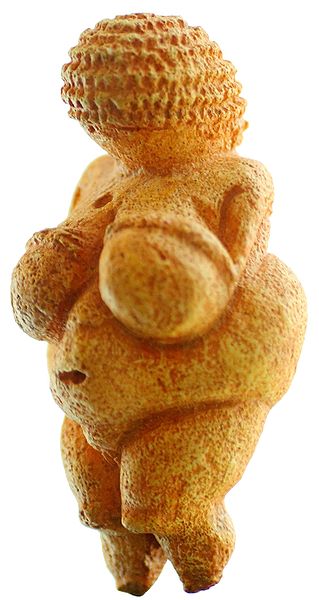Some Christians regard Mary, the Theotokos (or mother of God) for many believers, as a "spiritual mother," since she not only fulfills a maternal role, but is often viewed as a protective and intercessory force, a divinely established mediator for humanity, but she is not worshiped as a divine "mother goddess" officially. The Roman Catholic and Eastern Orthodox churches identify "the woman" described in Revelation 12 as the Virgin Mary because in verse 5 this woman is said to have given "birth to a son, a male child, destined to rule all the nations with an iron rod" whom they identify as Jesus Christ. Then, in verse 17 of Revelation 12, the Bible describes "the rest of her offspring" as "those who keep God's commandments and bear witness to Jesus." These Christians believe themselves to be the other "offspring" because they try to "keep God's commandments and bear witness to Jesus," and thus they embrace Mary as their "mother". They also cite John 19:26-27 where Jesus entrusts his mother to the Apostle John as evidence that Mary is the mother of all Christians, taking the command "behold your mother" to apply generally.
The Virgin Mary receives many titles in Catholicism, such as Queen of Heaven and Star of the Sea, that are familiar from earlier Near Eastern traditions. Due to this correlation, Protestants often accuse Catholics of viewing Mary as a goddess, but the Catholic Church always has condemned "worship" of the Virgin Mary. Part of this accusation is due to the Catholic practice of prayer as a means of communication rather than as a means of worship. Catholics believe that the dead who followed their God, have eternal life and can hear prayers in heaven from people here on earth.
The Bible refers to the personified Heavenly Wisdom (Hagia Sophia) in feminine terms. Most Christians who are Catholics believe that "God the Father" is masculine and that Jesus was a man; and further, that "the Church" is the female counterpart of God and is the Bride of Jesus.
Some Christians do not agree on this teaching and assert that God subsumes and transcends both masculinity and femininity. From their point of view the grammatical gender used to address the deity is a mere convention, and the masculine designations for the persons of the Trinity characterize a relationship and not gender, per se. However, this is a relatively recent phenomenon, and as such, might have constituted heresy for most of the early history of Christianity.

(left) A bronze statue of Isis nursing Horus from Ptolemaic Egypt; (right) A famous mediaeval icon of Mary and Jesus
Some of the Black Madonna icons are believed by some to derive from depictions of ancient goddesses, in particular the Egyptian Goddess Isis with her child Horus sitting on her lap. Medieval images of Mary and Jesus share this similarity, as well.
In many languages, such as Syriac, the word translated "spirit" takes the feminine gender. In early Christian literature in these languages, the Holy Spirit is therefore discussed in feminine terms, especially before c. A.D. 400.[14] Some scholars argue that it was based upon an original goddess figure who was minimized in later traditions[citation needed].
Members of The Church of Jesus Christ of Latter-day Saints (the Mormon Church) believe in, but do not worship, a Heavenly Mother, the wife and female counterpart—and equal of the Heavenly Father[15]. This belief is not emphasized, however, and adherents pray to the

